3DTV Today: One Step Back
The Society of Motion-Picture and Television Engineers (SMPTE) just completed an International Conference on Stereoscopic 3D for Media and Entertainment, what it calls “the only scientific gathering focused exclusively on 3D.” Like many SMPTE conferences, it gazed into the future, with one presentation introducing “the need for additional image processing to get pixel-level geometry matching,” another discussing “Spatial Phase Imaging technology” that “can be made to work with any existing sensor-optics combination, making it amenable to a plethora of applications,” and yet another was titled “What Is Holographic Television, and Will It Ever Be in My Living Room?”
By the accounts of those who attended the event, it was jam-packed with terrific information. This post, however, is not about the future of 3DTV but about its present. And it won’t even delve into issues of 3D vision.
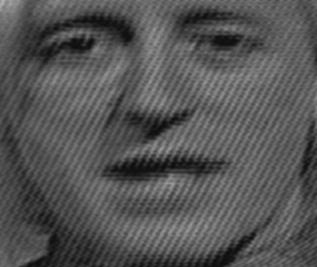
The image above is a portion of a television image of the face of Sir James Wilson Vincent Savile, better known as the entertainer Jimmy Savile. It is clearly a black-&-white image, and it’s from this fascinating web site about experiments to allow color to be recovered from black-&-white video recordings: http://colour-recovery.wikispaces.com/Richard+Russell’s+experiments
The reason the color can be recovered is the same reason the image looks so bad. When “compatible” color was created, it added a supposedly invisible color subcarrier to the video signal. But it wasn’t invisible. People who had been watching pristine images on their black-&-white TVs suddenly got extra dot and line patterns in their pictures. Those with color TVs got less detail.
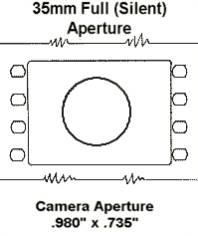 When
When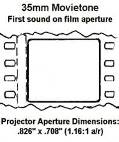 sound was added to movies, something similar happened. At the left is the four-units-wide by three-units-high (4:3 or 1.33:1 aspect ratio) frame of silent movies. When a soundtrack was added, it impinged on the frame, giving the picture shape a much squarer 1.16:1 aspect ratio. The so-called Academy aperture shrunk the picture (losing resolution) to return to a somewhat wider shape (1.375:1).
sound was added to movies, something similar happened. At the left is the four-units-wide by three-units-high (4:3 or 1.33:1 aspect ratio) frame of silent movies. When a soundtrack was added, it impinged on the frame, giving the picture shape a much squarer 1.16:1 aspect ratio. The so-called Academy aperture shrunk the picture (losing resolution) to return to a somewhat wider shape (1.375:1).
Now, in this age of digital (no more dot pattern) high-definition (widescreen with no resolution loss) TV, 3DTV sets are being sold. They can deliver an added sensation of depth (assuming all goes well). Do they cause anything to be lost as a result?
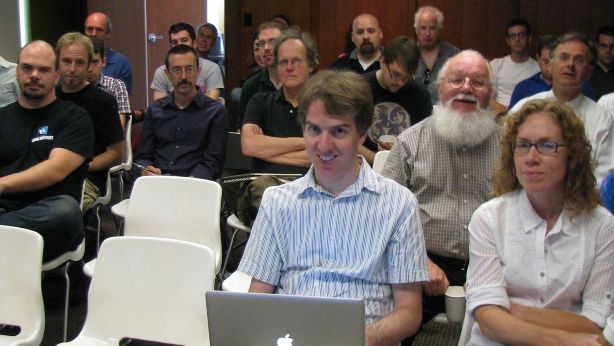
The picture above is a portion of one eye’s view of a 3D pair of photos shot by Pete Fasciano during a presentation he taught on July 21 about stereoscopic 3D. I’ve trimmed it to an HDTV-like 16:9 aspect ratio. Had it been a TV show shot in HDTV, it might have looked like the above.
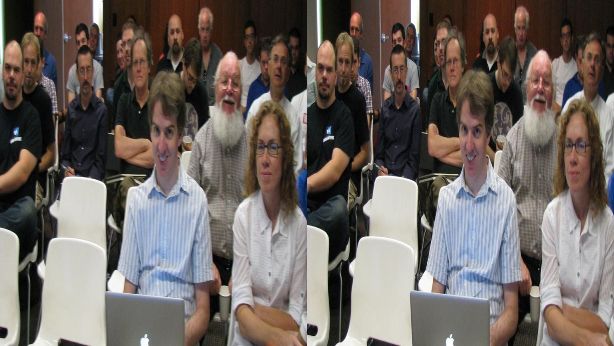
Someday, we might have a form of 3DTV that will deliver left-eye and right-eye images separately, with full spatial and temporal resolution. Today, what we have is the HDMI 1.4a standard. It calls for the above for 1080i HDTV 3D. The left- and right-eye views are placed side by side and squeezed into the HDTV frame. Instead of 1080i HDTV’s 1920 pixels across, there are just 960 for each eye’s view.
For today’s 3DTVs that use active-shutter glasses, that’s the only resolution loss. But some 3DTVs use passive glasses, with different eye views on different scanning lines. If that’s the case, the side-by-side configuration drops the horizontal resolution from 1920 to 960, and the passive-glasses system drops the vertical from 1080 to 540.
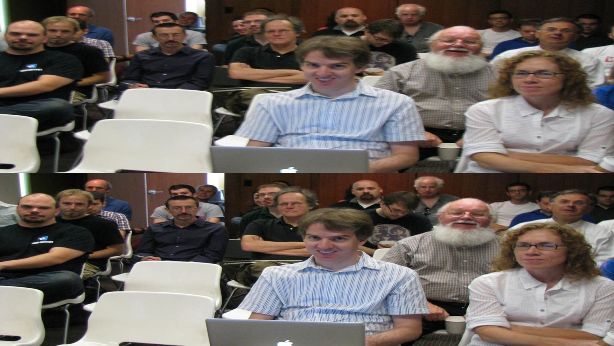
HDMI 1.4a calls for the above for 720p HDTV 3D. In this case the left-eye image is placed above the right-eye image. Of course, that drops the vertical resolution from 720 lines to 360. Now let’s add closed captioning.
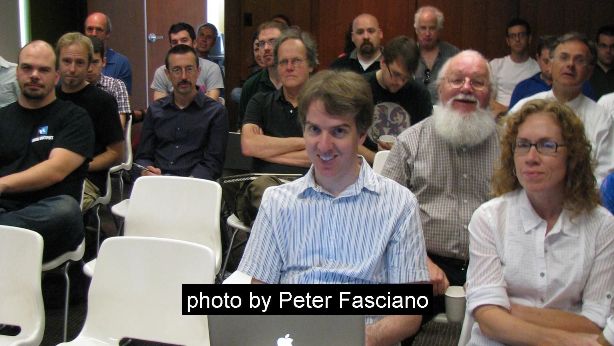
Above is a simulated HDTV image with a closed caption. Were this post about stereoscopic 3D and human vision, I might have pointed out that the caption is in the screen plane, so there will be a visual conflict between it and anything it is occluding that is set to come forward from the screen plane. But this post is not about that.
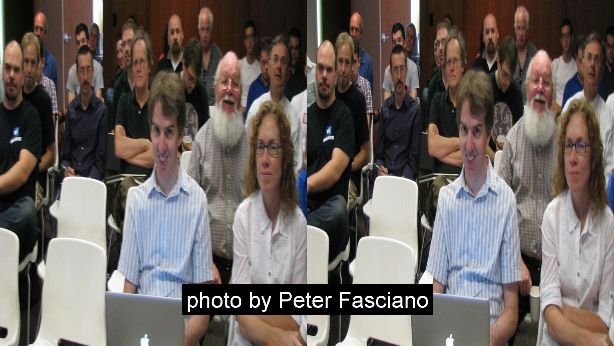
Above is the same closed caption, generated, perhaps, by a cable, satellite, or telephone-company set-top box. The caption appears where the box, not knowing about 3D, thinks it should appear.
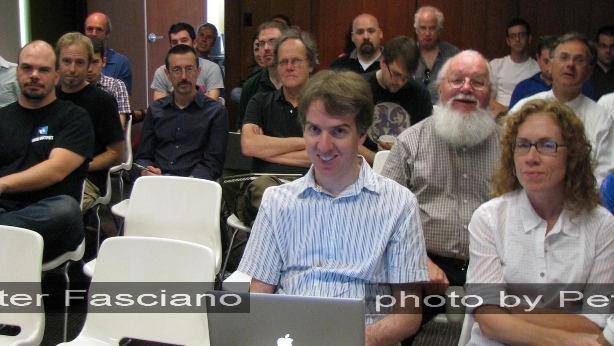
Finally, when the captioned 1080i HDTV 3D signal from the set-top box enters the 3DTV, this is the result. The caption is split in two, is elongated, and appears only half the time. I’ve illustrated that last by making the caption appear transparent, but it might be a little worse than that. The portion on the right will appear when the left-eye shutter of active glasses is open; the portion on the left will appear when the right-eye shutter is open.
From a technology standpoint, it’s relatively easy to design a system in which none of these problems will exist. The presenters and attendees of the SMPTE International Conference on Stereoscopic 3D for Media and Entertainment might be doing that right now. Unfortunately, 3DTVs are being sold today.
Tags: 3D, 3DTV, Academy aperture, closed caption, color recovery, HDMI 1.4a, Pete Faciano, resolution loss, set-top box, soundtrack,

3 comments
Mark, You seem to have skipped over 1.4 lossless “Image Stacking.” We have begun working with these “Stacked” 1920 x 1080 + 1920 x 1080 full HD images (Over/Under per frame.)
That mode is only for 24 frames per second.
These illustrations are exceedingly helpful, TVMark.
The comments are closed.